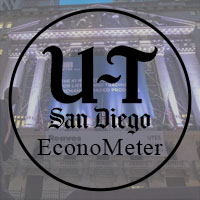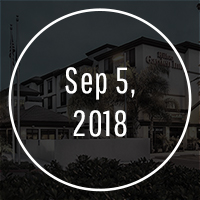Ride-Sharing Cos. Pursue Ways to Pick Up Tourist Business
from San Diego Business Journal (September 2015)
By LOU HIRSH
Nearly 60,000 passengers have taken trips using mobile app-enabled ride-sharing services — Uber, Lyft and Opoli — to and from San Diego International Airport since operators started a pilot program permitting those transportation providers in early July.
And with Los Angeles International Airport recently becoming the largest U.S. airport to allow the services — joining several others in California and throughout the U.S. — observers say it’s just a matter of time before ride-sharing makes its presence much better known at places such as hotels and tourist attractions.
Working In Concert
Chris Ballard, Uber’s San Diego general manager, said the company recently worked with operators of Sleep Train Amphitheatre in Chula Vista to establish designated pickup and drop-off zones for its customers, in part to streamline traffic flow, and is in the process of making similar arrangements with other local public venues with large crowds.
Already, he said the company is seeing rising demand for its car services geared to groups — such as Uber X, which uses SUVs — among tourists as well as local families for transportation to venues such as the San Diego Zoo. Customers are seeking to cut down on the time and expense geared to finding and paying for parking at popular destinations.
Like its competitors, San Francisco-based Uber also touts ride-sharing as an environmentally friendly way to cut down on trips and traffic congestion. Ballard said Uber is in talks, for instance, with U.S. and Mexico officials on arrangements that would allow its drivers to make cross-border trips between San Diego and Tijuana. (Currently, a San Diego Uber rider must be dropped off at the border, walk across, then pick up another Uber on the Mexico side.)
“The aim is to reduce the use of cars overall,” Ballard said. “That’s a difficult goal for a place like San Diego County, but we’re getting there.”
Since airport access became available, Ballard said Uber — with about 12,000 active full- and part-time drivers in San Diego County — is seeing its highest new local usage in city neighborhoods not reached by the San Diego Trolley, along with other portions of North and South County where it has traditionally been difficult to take a taxi quickly or cost-efficiently to places such as downtown San Diego and the airport.
At San Francisco-based Lyft, spokeswoman Chelsea Wilson said the company has established designated pickup and drop-off zones for its customers at the South by Southwest music and media festival in Austin, Texas, and will be looking to establish similar logistics at venues and events in San Diego County.
Lyft is also looking to boost its presence in the infrastructure of U.S. hotels — along the lines of traditional taxi stands seen at many high-end properties — especially important in high-traffic areas like the Las Vegas Strip, where by law there are limited places to hail rides from the street.
Lyft has about 100,000 regular riders in California but does not break down figures by individual cities, Wilson said.
‘Name Your Price’
At ride-share provider Opoli, based in the Los Angeles suburb of Hawthorne, founder and CEO Rattan Joea said his year-old company’s service, using an app currently in public Beta testing stage, has a “name your price” feature that helps users cut trip costs if they are not booking at the last minute. Opoli had a total of about 2,500 regular users as of late August at the San Diego and Los Angeles airports, which Joea said marked a double-digit percentage increase from early July.
Sixty percent of Opoli’s users are female, he said, with a high number of families using it to book trips in advance, he said.
Joea said the ambition goes beyond giving passengers relatively cheap rides between the airport and hotels. He sees the service one day becoming a cost-effective substitute for the shuttle services now operated by hotels and other companies for their customers and workers.
Corporations in India and other countries routinely contract with transportation services to bring workers to and from the office, he said, and the app-enabled services could play a big role as ride-sharing continues to gain traction in the U.S. “Why not keep those cars off the road, instead of having to set up large parking lots and garages to house vehicles that will be idled all day?” Joea said.
Avoiding Transportation Costs
Robert Rauch, president of hotel consulting firm R.A. Rauch & Associates in San Diego, noted that while the lodging category of the accelerating “sharing economy” — led by sites such as Airbnb — could pose a long-term threat to hoteliers, the ride-sharing category may prove to be a business benefit.
Hotel-run shuttle van services entail high labor, insurance and other costs, and hoteliers are ultimately in the lodging business, not the transportation business. Still, Rauch said higher-end hotels for now may want to maintain a higher degree of control over such offerings and keep them in-house, while other types of properties could opt sooner for contracting out.
“Hotels with different levels of service will be looking into different levels of these ride-sharing services,” said Rauch, whose company also owns two local hotels and manages others on behalf of clients.
In other ways, ride-sharing is already finding its way into the business models of major hotel chains. For instance, Hyatt Hotels and Starwood Hotels & Resorts recently signed separate agreements to integrate their loyalty point apps into that of Uber, allowing visitors to schedule transportation to their hotels in several cities.
Airport Service Opens Opportunities
Much of this can be traced to increasing access to the ride-share services at major U.S. airports, which now include facilities in New York City, Chicago, Atlanta, Dallas and Phoenix, along with nearly all of the major international airports in California.
San Diego International officials established a one-year pilot program that started on July 1 and is scheduled to run through June 30, 2016. Officials next year will gauge the effectiveness of the program and determine whether adjustments need to made, before the services become permanent or are expanded to allow other providers.
David Boenitz, director of ground transportation at San Diego International, said the facility saw approximately 27,000 drop-offs and pickups via the three ride-share services during July — about 93 percent of them using Uber — and the total user count for August was expected to be about 10 percent higher than July’s.
“We wanted to see whether there is a consumer demand for this, and so far it appears that there obviously is a demand,” Boenitz said.
Currently, local airport ride-share customers must go to designated spots in parking lots near the terminals to pick up their rides, as brief curbside drop-offs are permitted but pickups are not. The ride-share services do not yet have spots on the median islands where customers currently pick up traditional taxis and shuttle services.
In setting up the pilot program, Boenitz said officials took under consideration concerns of the taxi industry, which is vehemently opposed to the ride-sharing services. The airport has established rules for driver certification, insurance, vehicle fuel efficiency and other requirements that in some cases are stricter than current state standards.
“The goal here was to make this as level a playing field as possible,”
Boenitz said.
Ride-share Rules
Officials of the three ride-share services now at San Diego International Airport — Uber, Lyft and Opoli — said they recently have taken steps to alleviate potential confusion about using their services at the facility, including posting information on their mobile apps.
As part of a one-year pilot program, San Diego International Airport allows brief curbside drop-off of ride-share customers at its terminals, but not pickups. Those pickups must be arranged in advance and made from designated spots in parking lots near the terminals.
Uber’s rules for San Diego International, similar to those of the other services, are posted at driveubersd.com/san-airport.







